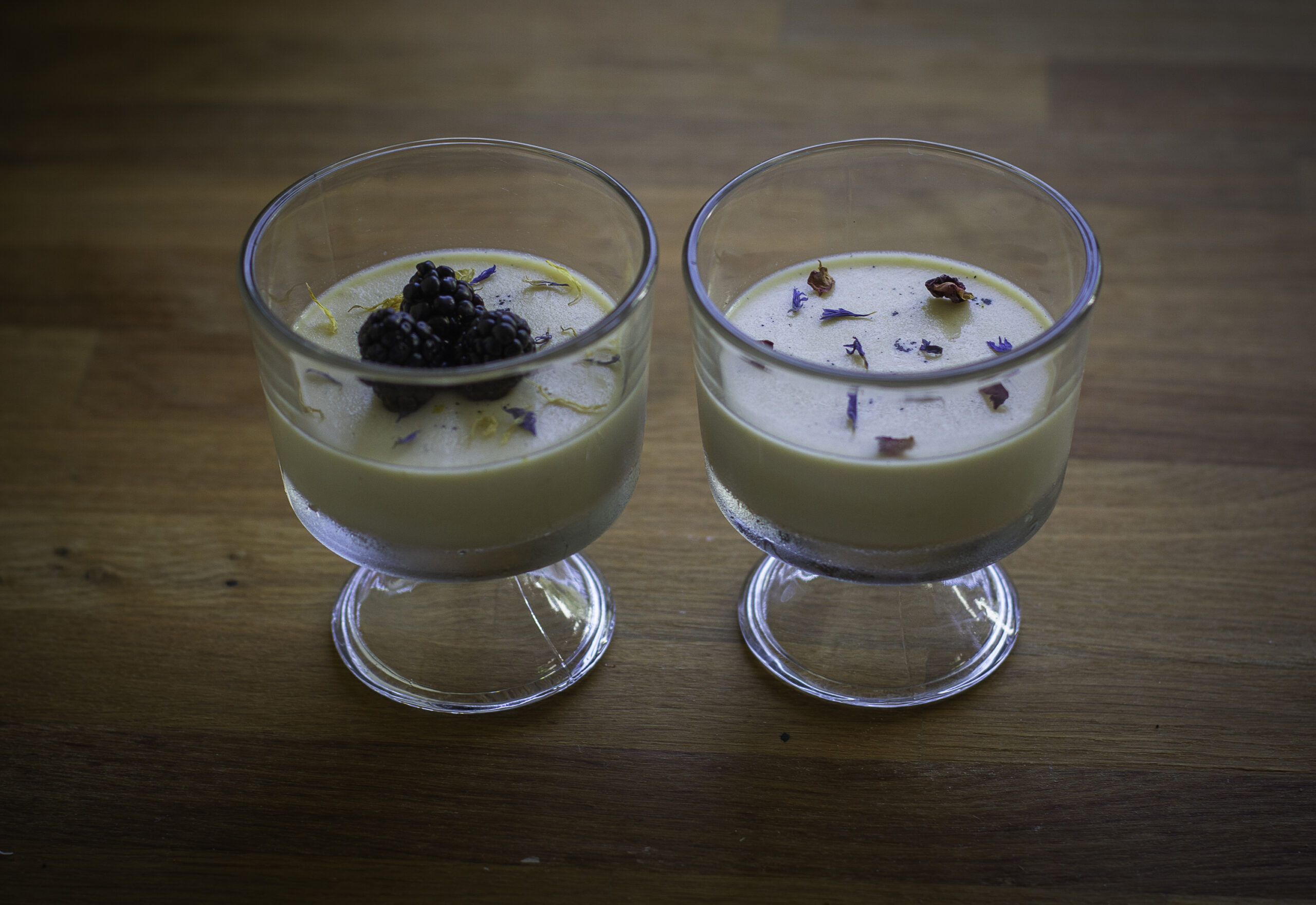Welcome back to Food Science Friday. Today we’re diving into our first dessert on the show, and making Panna Cotta. Happy Friday!
What is panna cotta?
Panna Cotta essentially means cooked cream in Italian, and it is a dessert made of sweetened cream and gelatin. It’s texture is kind of reminiscent of pudding or jello, which are often also made with gelatin, but panna cotta cooked right has this incredibly smooth mouth feel.
What gives panna cotta its texture?
Panna Cotta is a gel and it’s the gelatin that gives this panna cotta its structure/texture. Gelatin is a mix of proteins often extracted from the collagen in hides, bones, and connective tissue of animals, but there are some vegan and vegetarian alternatives as well.
Gelatin typically comes as a powder, but it can also be found in sheets. For this recipe we’ll be using the powder form. Gelatin contains long thin protein strands, which give it its unique ability to form a gel. These molecules when heated and cooled will form a network by creating cross links among themselves, and trapping the water molecules within the protein strands, which creates an elastic solid.
There are three phases of gel formation, and before we apply heat, we’ll need to bloom the gelatin, so let’s get blooming!
Three Phases of Gel Formation
1. Hydration:
The first phase is Hydration- Gelatin can absorb approximately 5-10 times it’s weight! To bloom, sprinkle the gelatin granules over the milk and let stand for 3-5 minutes.
Unflavored gelatin will clump if not properly hydrated in cool or room temp water before applying heat.
2. Dispersion
The second phase is dispersion- after hydrating or blooming your gelatin transfer to a saucepan and stir over medium heat just until the gelatin dissolves, not boils. Gelatin disperses at approximately 100 deg F (38 C), so it doesn’t need to boil. During dispersion, the protein molecules in the gelatin will denature and unfold.
3. Gelation
The third phase is gelation and occurs when you cool the mixture. Upon cooling, the denatured proteins will begin to aggregate. The mixture will first convert to a sol, which is a colloidal dispersion of a solid dispersed in a liquid. Then after a few hours in the refrigerator, it will then create a more solid-like gel.
Earl Grey Vanilla Panna Cotta
Ingredients
- 1 cup milk
- 2 cups cream
- 2 pods vanilla bean
- 2 tbsp earl grey tea loose leaf
- 2 tsp. unflavored gelatin
- ⅓ cup sugar
Instructions
- Heat 2 cups cream + 1 cup milk over medium heat and bring to a light simmer (DO NOT Boil)
- Add vanilla bean and earl grey tea and allow to infuse for 15-20 minutes (if you prefer a stronger flavor you can remove from heat, refrigerate and leave in fridge over night)
- Once you are happy with the flavor, remove from heat, and pass through a strainer to strain out tea leaves, and use a knife or spoon to scrape out the gooey seeds from the vanilla bean. Discard the rest of the pod, but stir in the gooey seeds.
- Place flavored cream in the refrigerator to cool to room temperature (if short on time you can also do this in the freezer, but be careful not to freeze)
- To bloom gelatin, add 2 tsp of unflavored gelatin to cool or room-temperature infused cream
- Stir with a whisk and let sit for 3-5 minutes
- Place over medium heat and stir until gelatin is dispersed but again do not boil
- At this point you can add 1/3 cup sugar to warm cream and mix until dissolved
- Pour mixture into glass jars and refrigerate for at least 6 hours
- Garnish with fresh lemon zest, edible flowers, and or fresh fruit
Video
Sources:
Brown, A. (2014). Understanding Food: Principles and Preparation. United States: Cengage Learning.


